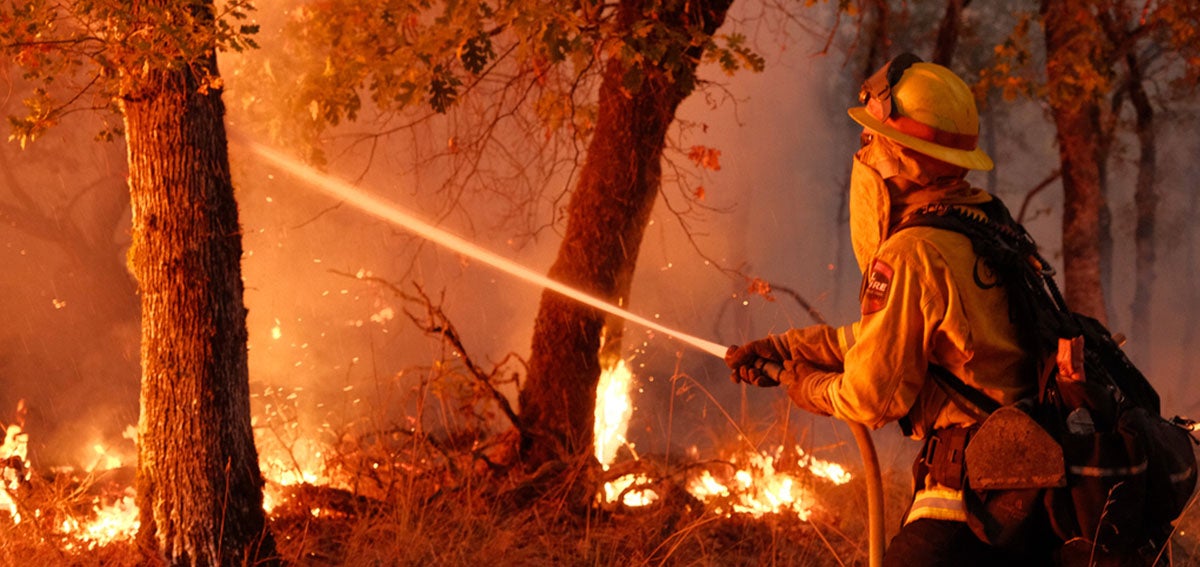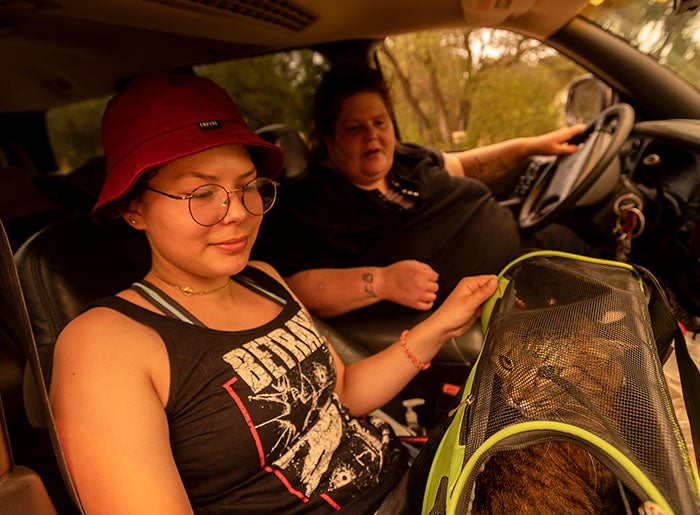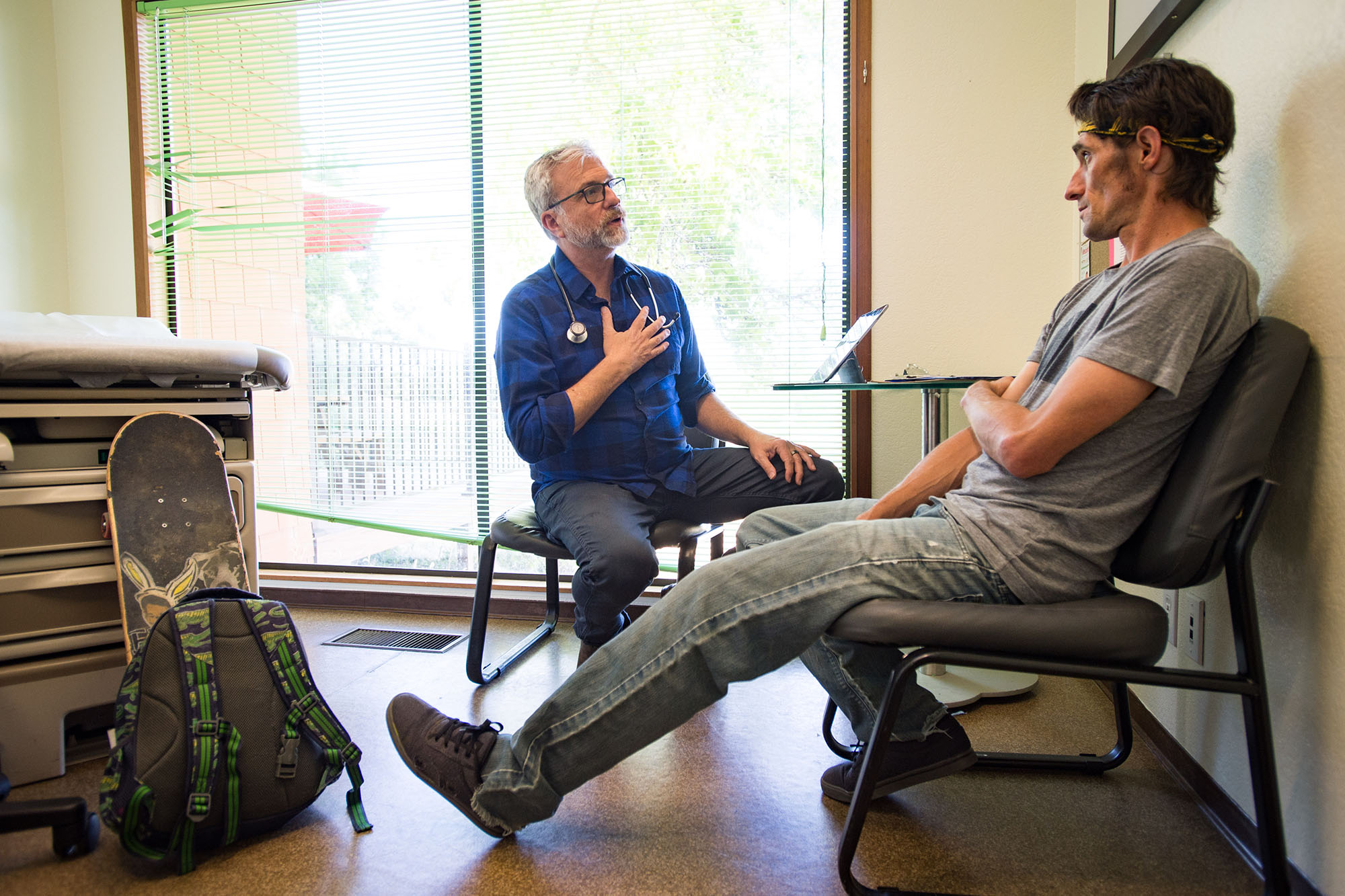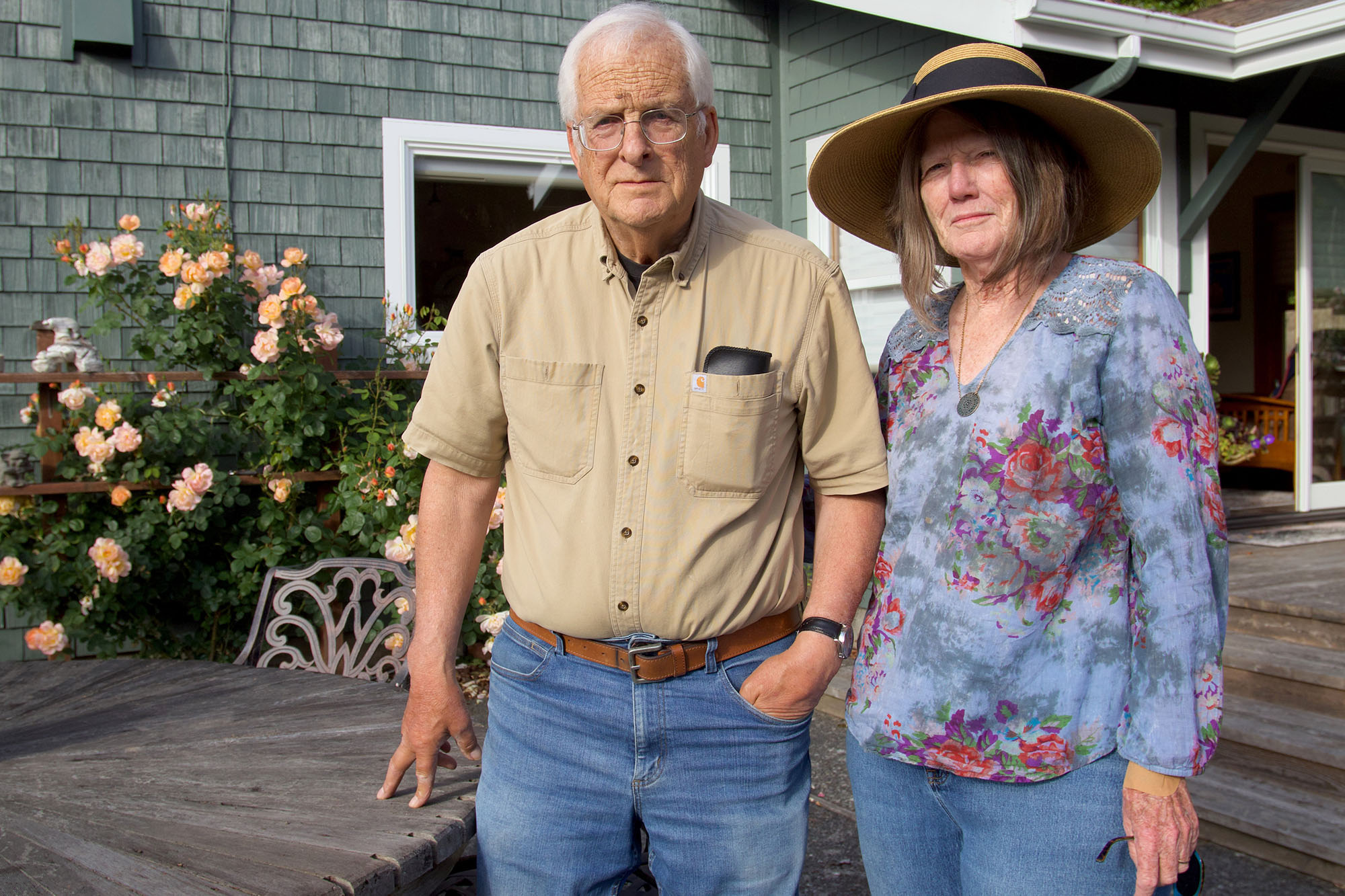

On the morning of August 20, Natalie Lyons and Craig Phillips sat in their pickup truck across the street from the Santa Cruz Civic Auditorium. Under an orange sky thick with smoke and ash, they weighed the options. They could sleep inside the crowded evacuation site and risk contracting the coronavirus, or spend the night in the truck packed with possessions and their confused dog and cat.
They opted for the truck. “There’s some people coughing, their masks are hanging down,” Lyons told Kellen Browning in the New York Times. “I’d rather sleep in my car than end up in a hospital bed.”
Like thousands of Californians, Lyons and Phillips evacuated their home after an unprecedented volume of lightning strikes on August 16 ignited hundreds of wildfires, including the second- and third-largest fires in the state’s history. The CZU Lightning Complex, a group of fires burning across San Mateo and Santa Cruz Counties, has displaced over 25,000 people. As evacuees struggled to find a place to stay, hotels as far away as Monterey filled up, and evacuation sites were forced to turn people away to comply with physical distancing requirements.

Phillips retired from his job with a Bay Area air quality agency in April, and now he and Lyons anticipate living out of their Toyota Tundra for the foreseeable future. “I retired into the pandemic, and now homelessness,” he said.
Experts have been warning for months about the convergence of the COVID-19 pandemic and wildfires in California. Late August was earlier than Californians anticipated, and the fires erupted with a ferocity that is straining the state’s public health and emergency response resources.
For months, public health experts have urged people to go outside, where the wind and sunlight reduce the risk of coronavirus transmission. Now Californians are being advised to stay inside with doors and windows shut to avoid breathing hazardous wildfire smoke.
For the more than 150,000 people experiencing homelessness in California, and housed people displaced by the wildfires, this a choice between coronavirus risk at a shelter and exposure to smoke carrying both particulate matter (soot) and a long list of chemicals and gases.
Hazardous Air Increases COVID-19 Vulnerability
“Anything that weakens the lungs, like really bad air, which causes the lungs to lose some of their ability to fight infection, is going to be an issue,” Afif El-Hasan, MD, a pediatrician and lung health specialist, told Browning. “In theory, breathing in a lot of bad air can make you more susceptible to a more serious [COVID-19] illness.”
JoLyn McMillan, CEO of the Stockton Shelter for the Homeless in San Joaquin County, told the Huffington Post’s Sarah Ruiz-Grossman that her staff is seeing an uptick in respiratory issues among the shelter’s homeless residents. “The ash is everywhere right now, it rains on us all day long,” McMillan said. It’s a struggle “to assess how we can keep our people safest from the virus, smoke and ash.”
Masks could help, but N95 masks that can filter out wildfire smoke and protect against the coronavirus still are in short supply months into the pandemic. They should be reserved for health care workers, according to advice from the US Centers for Disease Control and Prevention. The California Hospital Association expects the shortage of personal protective equipment, including N95 masks, will last two more years.
The next best option, according to John Balmes, MD, a pulmonologist at UCSF, is a surgical mask. “They’re actually somewhat protective with regard to wildfire smoke because they’re standardized,” he told KQED’s Michelle Wiley and Laura Klivans. Surgical masks are “about a third as good, on average, as an N95.”
Fires Put Additional Burden on System
In Northern California, the LNU Lightning Complex is straining the health care system’s ability to respond to COVID-19. Several hospitals and nursing homes have been forced to evacuate, Catherine Ho reported in the San Francisco Chronicle.
Adventist Health St. Helena Hospital evacuated 51 patients and sent them to 10 nearby hospitals. Though not in an evacuation zone, Kaiser Vacaville Medical Center transferred four intensive care patients, including some with COVID-19, to nearby Kaiser hospitals as a precaution.
At the NorthBay Healthcare Group, which serves Solano County, nearly one-third of its 2,900 employees have been affected by the wildfires. “A lot of our staff are evacuated, many are going back now, but they’ve had a crazy week,” Seth Kaufman, MD, chief medical officer for NorthBay, told Ho.
Many patients are presenting with smoke-related health issues, which poses a challenge because “it’s difficult to tease out COVID versus smoke-related symptoms,” Kaufman said. Underlying respiratory issues increase a person’s risk of becoming seriously ill if they contract the coronavirus.
“Previous studies of wildfire smoke exposure have found that the small particulates people inhale can damage not just the lungs, but the body’s immune response, which can then have further negative effects,” Erin Allday reported in the San Francisco Chronicle.
The unsafe air quality was the reason that organizers decided to cancel a massive, free outdoor coronavirus testing event in East Oakland on August 22 and 23. Organized by a coalition of East Oakland community organizations in partnership with UCSF, up to 2,000 Black residents were expected to be tested, Jacob Simas reported for the Oaklandside.
“It’s like a double whammy,” Jamaica Sowell, director of governmental and community affairs for Roots Community Health Center, told Simas. Roots, which helped organize the event, was founded in Oakland in 2008 and works to advance health equity for residents of East Oakland who are uninsured or have low incomes. In Oakland’s Alameda County, Black residents have the highest per capita COVID-19 death rate, 32.7 per 100,000 residents — nearly three times that of white residents. “Can we just catch a break to address the disparities in how the pandemic is affecting our community?” Sowell asked.
The organizers mobilized over 200 volunteers for the testing event and now plan to reschedule it when the air quality improves.
Firefighters at Risk of Infection
California’s double emergency has pushed wildland firefighters into the crossfire. Temporary base camps, where they rest, eat, and wash up, are usually crowded and grimy. New protocols, including mask requirements and physical distancing, aim to prevent coronavirus spread at these sites. Even though “most firefighters are young and fit, some will inevitably fall ill in these remote makeshift communities of shared showers and portable toilets, where medical care can be limited,” Matt Volz reported in California Healthline.
Even if firefighters aren’t infected at base camps, they could get sick en route to a blaze. Transport vehicles are packed full to reduce the number of vehicles needed near the fire lines and allow faster evacuation on narrow dirt roads.
Now firefighters are being spaced out in larger numbers of transport vehicles and required to wear masks. “They can’t put as many firefighters next to each other on the fire line,” Bill Stewart, PhD, codirector of Berkeley Forests, a research center at UC Berkeley, told the Sacramento Bee.
As of Monday, the CZU Lightning Complex is 39% contained and the LNU Lightning Complex is 63% contained. The SCU Lightning Complex, affecting five counties including Santa Clara and Stanislaus, is 60% contained. Because California experienced a very dry winter, the wildfire risk will remain high going into the typically active wildfire months of October and November.
Stay safe out there. How is the air quality in your neighborhood? Email me.
Authors & Contributors


David Odisho
David Odisho is a San Francisco–based photojournalist who focuses on societal and environmental shifts that affect everyday lives.
His work has been featured by National Geographic, the New Yorker, Washington Post, Bloomberg, Getty Images, and CNN, among other editorial platforms.





